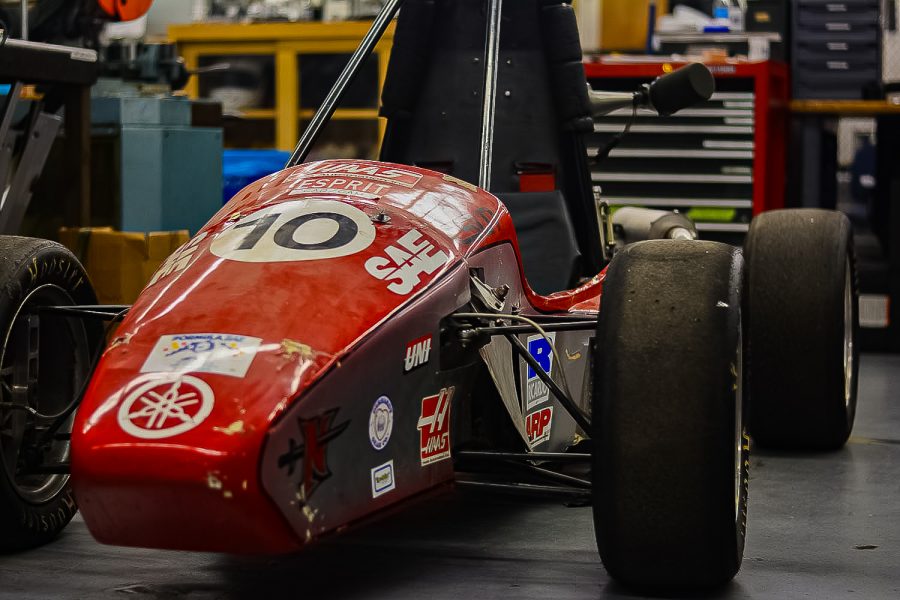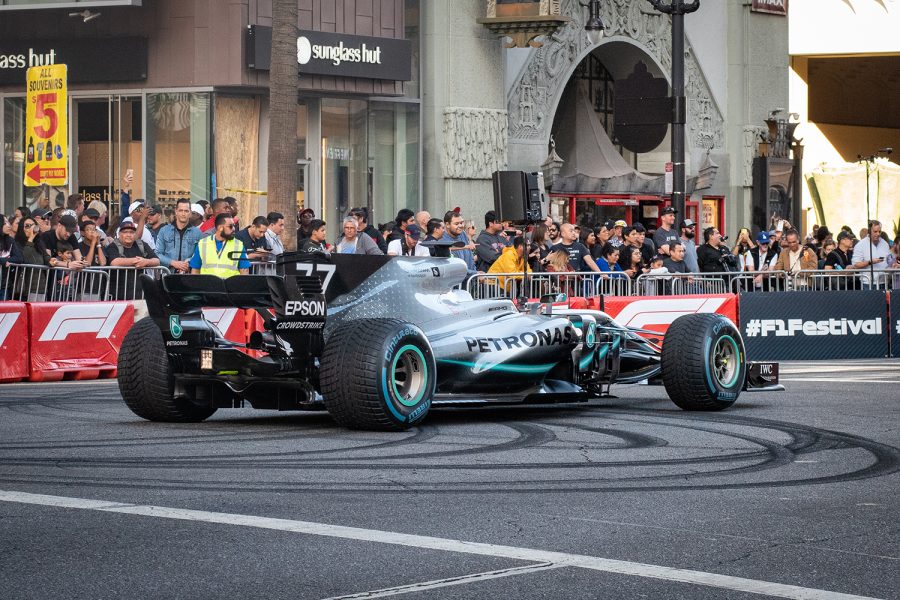Formula One races to become a popular sport in the US
April 19, 2022
Nightlife in downtown Long Beach is always lively, but this particular Saturday night at the Trademark Brewery was especially hectic. Dozens of auto racing fans wearing team jerseys crowded the brewery for drinks to sip, while trying to get a view of the 2022 Australian Grand Prix shown on the televisions. The majority of people in the brewery raised their glasses and erupted in cheers, while several others cried out in despair, when Ferrari driver Charles Leclerc took the lead. This scene of passionate fans encapsulated the surge of Formula One popularity in the United States.
Formula One has become one of the fastest-growing sports on American television. Last year’s season had the highest viewership among U.S. audiences in the sport’s history, averaging 949,000 viewers each race, according to ESPN.
Formula One is considered by motorsport fans and drivers alike to be the fastest and highest form of auto racing. It features custom single-seat cars with wheels outside the body of the vehicle, called open-wheel race cars. Formula One is similar to other open-wheel racing series, such as North American-based IndyCar. The exception is that it differs in the regulations that dictate the competition rules, car designs and performance standards. It is also much different from closed-wheel series, like NASCAR, in the look and performance of the cars, as well as the racing style.
The sport follows 10 teams and 20 drivers as they compete for two titles in a series of race tracks and street circuits around the world. The constructors’ championship is awarded to the team that scores the most points in a season, while the drivers’ championship is awarded to the driver with the most points scored in a season.
The roots of grand prix racing began in 1901, but the official establishment of Formula One didn’t happen until 1950 in England. Since then, 75 tracks across the globe have hosted Formula One grand prix races.
Denis Shvartsman, a CSUN student and engine team lead of the Matador Motorsports Formula Society of Automotive Engineers team, has watched Formula One since he was 11 years old.
“I would describe it as the highest form of motorsport, the pinnacle, where all the best machines are built, the most engineering takes place,” Shvartsman said. “If you look at all the innovations in vehicles, a lot of that starts in Formula One, because you need to innovate to stay at the top of the game.”

The U.S. will host more races than any other country on the Formula One calendar in 2023, which includes the U.S. Grand Prix in Austin, Texas, the Miami Grand Prix and the recently announced Las Vegas Grand Prix. The 2021 U.S. Grand Prix was the most-attended race last year with more than 400,000 people, according to Formula One’s audience figures. Tickets to the 2022 race in Austin sold out in just over 24 hours.
Much of this new love for the once unpopular sport in the U.S. can be traced to the Netflix docuseries “Formula 1: Drive to Survive,” which came out in 2019. The show, now in its fourth season, covers the previous year’s Formula One season from the perspective of the drivers and teams.
Shvartsman said he was able to get his girlfriend and several of his friends into Formula One through the Netflix series.
“[‘Drive to Survive’] is just a gateway,” Shvartsman said. “When you love something, you want to spread it, you want to share it … and think it’s great, because it provides a good exciting factor.”

The show may appeal to casual audiences who would otherwise have no interest in motorsports, as it allows viewers to witness the journey of the drivers and teams pushing through their highest and lowest points. It also highlights the most dramatic moments of the season, including huge crashes, Formula One politics and the general cutthroat nature of the sport where the Netflix series gets its name.
“Drive to Survive” attracts hardcore Formula One fans too, possibly because it gives a new level of behind-the-scenes access to each of the teams that previous coverage could not.
“I think it’s really good that they brought the lower teams a little bit more into the light, they brought the midfield a little bit more into the light,” Shvartsman said. “I mean, I don’t really care who’s coming in 20th, but I want to know their story and why they’re struggling.”
“Drive to Survive” is not the only reason Formula One’s popularity has exploded in the U.S. When ESPN acquired the U.S. broadcasting rights for Formula One in 2018, it made each race available to watch live on ESPN and ABC commercial-free. If two hours of racing without any advertising breaks was too much, anyone could watch the highlights from every race on Formula One’s YouTube.
The sport made another effort to attract American viewers in 2019 with the F1 Hollywood Festival, which shut down a two-block stretch of Hollywood Boulevard to bring Formula One culture to Los Angeles. Formula One drivers showed off their cars to the crowds in attendance and even performed doughnuts for the bemused spectators and tourists.
This year, Formula One introduced a series of rule changes, including budget limits that are designed to make the competition closer.
“We need as much innovation as possible,” Shvartsman said. “And the fact that more people are watching Formula One, there’s more incentive for there to be better racing, better regulations for better racing, more innovation.”
